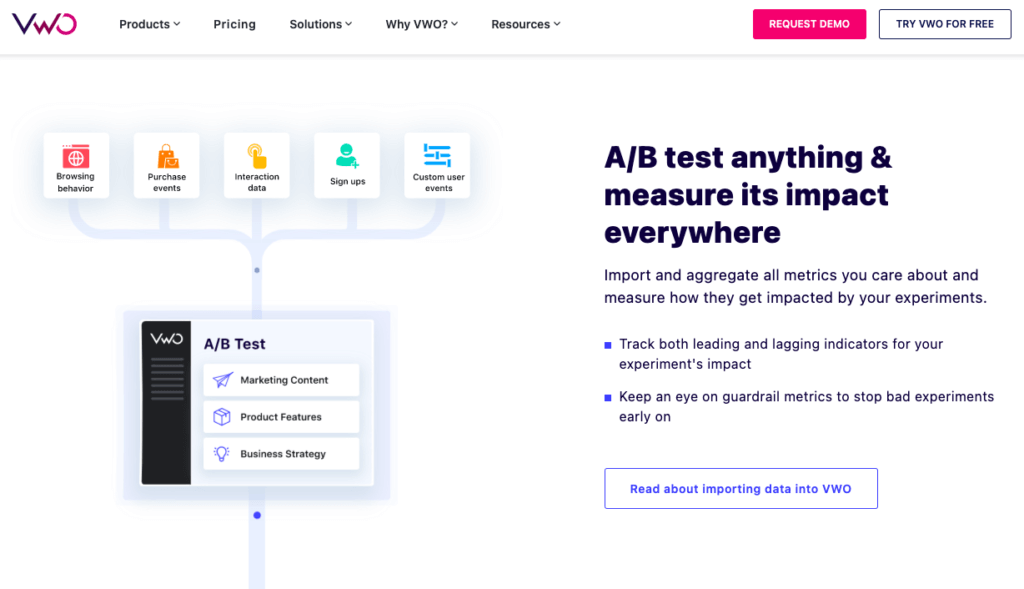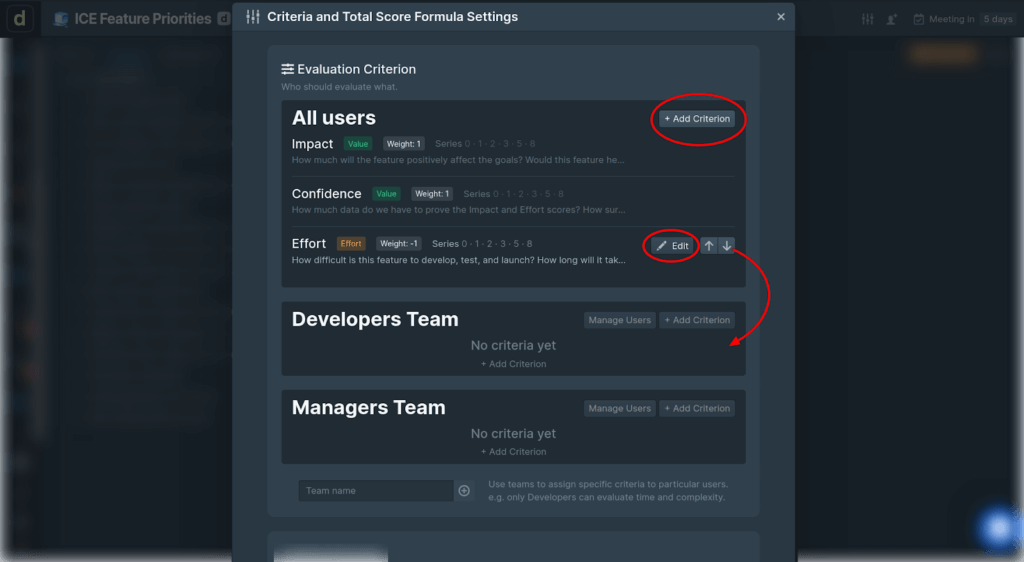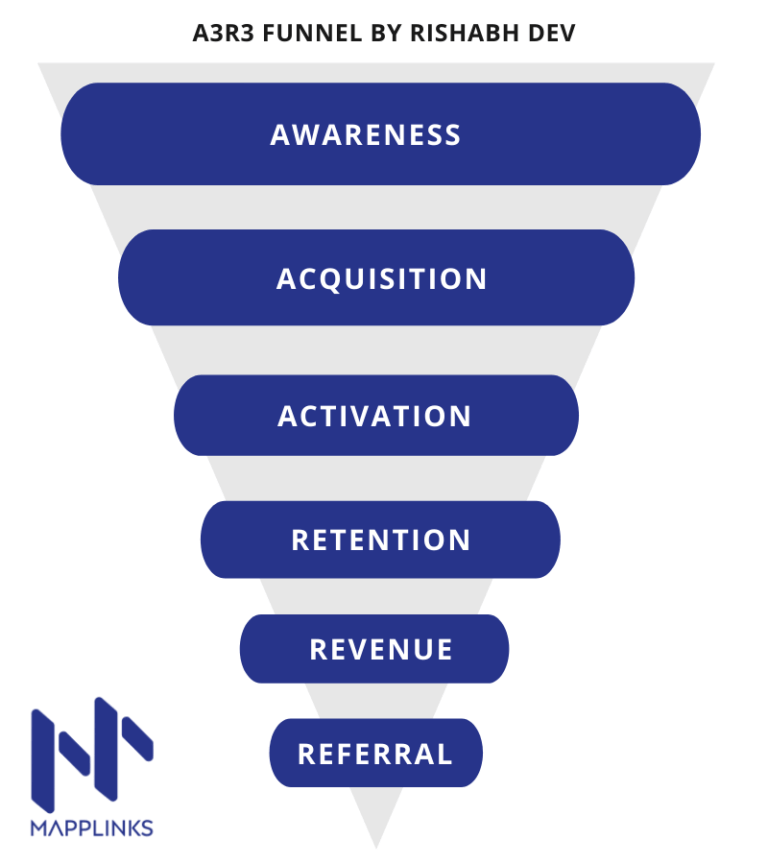If you are an aspiring growth hacker looking to optimize your strategies and tactics, a thorough understanding of the key terms of growth hacking is essential.
From A/B testing to viral mechanics, each term plays a vital role in driving growth for your business.
In this article, we will explore 21 essential terms all growth hackers should be familiar with. These include piggybacking, A3R3 funnel, deep dive, and more. By gaining a solid understanding of these terms, you’ll be able to optimize your growth strategies and take your business to new heights.
Piggybacking
Piggybacking is a growth marketing tactic that a growth hacker often uses to leverage an existing platform or audience to increase their own visibility and reach. Essentially, they ‘ride on the coattails’ of an established platform or audience to gain exposure for their own brand or product.
For example, if a growth hacker has a new app that they want to promote, they might piggyback off the popularity of an existing social media platform by running a targeted ad campaign. This would allow them to reach a large audience of potential users who are already engaged with the platform and could help them quickly grow their user base.
Piggybacking can be a cost-effective and efficient way for growth hackers to reach new users or customers, particularly if they are just starting out and don’t have a large marketing budget or an existing audience of their own. However, it’s important to be strategic about which platforms to choose to piggyback off of and to ensure that the messaging and branding align with the platform being targeted.
A/B Testing
A/B testing is a great technique for growth hackers to optimise various elements of a marketing campaign or website by testing two different variations against each other to determine which one performs better.
For instance, if you run an e-commerce store, you might want to test two different product descriptions to see which one drives more sales. You would create two variations of the description, and then randomly display each version to a sample group of users. By tracking the conversion rates of each group, you can determine which variation is more effective at driving sales and use that version moving forward.
A/B testing is typically used to improve a specific “focus metric,” such as click-through rates, conversion rates, or user engagement. By carefully selecting and testing different elements, such as headlines, images, or call-to-action buttons, growth hackers can optimise their marketing efforts and improve their overall performance.
Some common tools used for A/B testing include Google Optimize, Optimizely, and VWO. It’s important to note that A/B testing requires careful planning and analysis to ensure accurate results, and should be done with a clear hypothesis and specific goals in mind.

AHA Moment
The AHA moment is a fundamental concept in growth hacking that growth hackers frequently use to refer to the moment when a user achieves a desired outcome or experiences a breakthrough in understanding through the use of a product or service. This moment is often the point at which users become fully committed and engaged with a product or service, resulting in increased retention, referrals, and revenue.
In the context of growth hacking, the AHA moment is the moment when a growth hacker’s experiment or marketing campaign successfully resonates with the target audience and leads to a positive outcome, such as increased engagement, conversions, or revenue. For example, suppose a growth hacker is running an email marketing campaign. In that case, the AHA moment might occur when a user opens an email, clicks through to their website, and makes a purchase.
To identify the AHA moment for a product or service, growth hackers must meticulously analyse user behaviour and identify key metrics that correlate with engagement and retention. Once the AHA moment has been identified, growth hackers can focus their efforts on optimising their product or service to ensure that users can achieve that moment as quickly and easily as possible.
OMTM and North Star Metric
OMTM and North Star are two key growth hacking concepts that refer to the focus metric on which growth experiments are focused.
A growth hacker relies on OMTM and North Star metrics to guide their experiments and focus on critical metrics. OMTM represents the most crucial metric that drives growth and aligns with business goals, while North Star is the metric that measures long-term success and customer satisfaction.
By continually testing and iterating on growth experiments, growth hackers can identify the most effective strategies for driving growth and improving the OMTM and North Star metrics.
ICE Framework
ICE is a prioritisation framework that growth hackers can use to prioritise their experiments. It is based on three factors: Impact, Confidence, and Ease.
The Impact score measures the potential impact of the experiment on the business goal, the Confidence score measures the level of certainty that the experiment will succeed, and the Ease score measures the level of effort required to implement the experiment.
Each factor is given a score from 1 to 10, and the scores are then added together to create a total ICE score. The higher the ICE score, the higher the priority of the experiment. By using the ICE score, growth hackers can focus their efforts on the experiments that are most likely to drive results.
Ducalis is a tool that helps growth hackers track their experiments and prioritize them using the ICE framework. Ducalis allows you to add the ICE scores to your task tracker, including popular tools like Jira, Asana, Trello, and ClickUp. This makes it easier to keep track of your experiments and prioritize them based on their ICE score.

CTA
A Call to Action (CTA) is a vital tool for a growth hacker that prompts users to take a specific action, such as signing up for a service, making a purchase, or downloading an app.
CTAs are typically presented as buttons, text, or images, and are placed strategically throughout a website or app to guide the user towards a desired outcome.
A well-designed CTA should be clear, concise, and visually appealing. It should clearly communicate what action the user should take and what they can expect as a result of taking that action. CTAs should be placed in prominent locations on a website or app and should be designed to stand out from the surrounding content.
CRO
Conversion Rate Optimisation (CRO) is a crucial process for a growth hacker to improve user actions on websites or apps. Techniques like A/B testing, user research, and website optimisation are used to identify and address barriers to conversion. Improving the conversion rate can increase revenue, and user engagement, and drive growth.
SEMrush is a versatile tool for growth hackers, providing site auditing, competitor analysis, keyword research, and A/B testing features. With SEMrush, growth hackers can identify and address conversion barriers, improve website optimisation, and ultimately drive growth and revenue.
T-shaped
T-Shaped is a term used to describe a growth hacker who possesses a wide range of marketing knowledge and techniques across various channels (the top of the T) and has in-depth expertise in a specific area (the stem of the T).
A T-Shaped growth hacker collaborates effectively with other team members, has a broad understanding of various skills, and has an area of specialisation to contribute to the team.
The horizontal part of the T represents the growth hacker’s comprehensive understanding and skills in various marketing channels and techniques, including content marketing, SEO, social media, email marketing, and more. The vertical part of the T represents the growth hacker’s in-depth expertise in a specific area, such as user experience design, data analytics, or PPC advertising.
T-Shaped growth hackers bring a holistic perspective to marketing challenges by combining their broad and deep knowledge. Their unique skill set allows them to work effectively across different teams and solve specific problems, driving growth in a particular area. They are highly valued in the marketing industry due to their ability to apply their skills and expertise to various situations.
Triple Peak
As a growth hacker, it’s crucial to understand the different user segments and their adoption patterns and behaviours, as this knowledge can help you tailor your growth strategies to meet the unique needs of each group.
Triple Peak is a growth hacking framework that describes the three stages of growth for new social platforms and provides guidance on how to leverage each stage to drive growth.
The three stages in the Triple Peak framework are Innovators, Early Adopters, and Laggards.
- Innovators are the first group of users to adopt a new social platform, and they are typically tech-savvy and willing to take risks on new and unproven platforms. Growth hackers targeting Innovators should focus on creating buzz and generating excitement around the platform through targeted marketing campaigns, influencer outreach, and word-of-mouth marketing.
- Early Adopters are the second group of users to adopt a new social platform, and they are typically opinion leaders and influencers who are well-connected within their communities. Growth hackers targeting Early Adopters should focus on creating content and features that appeal to the specific needs and interests of this group, such as exclusive access to new features or early access to content. This group is crucial for driving sustained growth and building a loyal user base.
- Laggards are the final group of users to adopt a new social platform, and they require more convincing to adopt a new platform. However, they are important for driving mass adoption and achieving critical mass for the platform. Growth hackers targeting Laggards should focus on creating user-friendly features and interfaces that make it easy for new users to onboard and engage with the platform. They should also focus on creating social proof and demonstrating the value of the platform through user testimonials and case studies.
By leveraging the Triple Peak framework, growth hackers can strategically target different segments of users at each stage of the platform’s growth, driving sustained growth and building a loyal user base.
A3R3 Funnel
The A3R3 Funnel is a growth hacking framework that outlines the key stages of a customer’s journey towards becoming a loyal user and advocate for a product or service. The acronym A3R3 stands for Awareness, Acquisition, Activation, Retention, Revenue, and Referral, which are often referred to as the pirate metrics of growth hacking.
- Awareness: The Awareness stage is where potential customers become aware of a product or service. This can happen through various channels, including social media, search engines, and advertising.
- Acquisition: Once customers are aware of a product, the goal is to acquire them as users. This can be achieved through tactics such as email marketing, social media marketing, and content marketing.
- Activation: After acquiring users, the goal is to get them to start using the product or service. Activation can involve providing tutorials, incentives, and personalized experiences.
- Retention: Once users are actively using the product or service, the focus shifts to retaining them as long-term users. Retention involves strategies such as providing excellent customer service, offering rewards for loyalty, and continuously improving the user experience.
- Revenue: The Revenue stage involves generating income from users. This can happen through various methods such as subscription fees, in-app purchases, and advertising.
- Referral: The final stage, Referral, involves turning loyal users into advocates who refer others to the product or service. This can be achieved through referral programs, social sharing, and other incentives.

Deep Dive
‘Deep Dive’ refers to a thorough exploration of a specific metric or growth experiment. As a growth hacker, conducting a deep dive involves analysing a particular aspect of a product or service to gain a deeper understanding of its performance and identify opportunities for improvement.
A deep dive usually involves collecting and analysing data related to a specific metric or experiment. This can include user behaviour, conversion rates, or website traffic, to identify patterns, trends, and potential areas of improvement. A growth hacker may also conduct user research, such as user surveys, testing, or interviews, to gain insights into the user experience and identify areas where the product or service can be improved.
The purpose of a deep dive is to gain a deep understanding of a specific aspect of a product or service and identify opportunities for growth and optimisation. By pinpointing specific areas where improvements can be made, growth hackers can develop targeted experiments and strategies to drive sustainable growth.
Lean
The ‘Lean’ concept is often used in growth hacking to reduce waste and maximise efficiency. The idea behind lean is to focus on experimentation and iteration, with the goal of creating products or services that meet the needs of customers in the most efficient way possible.
In the context of growth experimentation, lean refers to a mindset that encourages growth hackers to focus on the most important metrics and experiments, while minimising the resources and time spent on less important initiatives. This involves identifying and prioritising experiments that have the highest potential for impact and conducting them in a rapid and efficient manner.
One of the key principles of lean experimentation is the use of the Minimum Viable Product (MVP) concept. This involves developing a product or feature with only the most essential elements, in order to quickly test and validate the concept with customers. By doing this, growth hackers can avoid wasting time and resources on developing a fully-featured product that may not meet the needs of customers.
Another key principle of lean experimentation is the use of data-driven decision-making. By analysing data from experiments, growth hackers can quickly identify what works and what doesn’t, and make decisions based on evidence rather than intuition.

See also: Lean and Agile Marketing
Agile
Agile is a concept that originated in software development and has since been adopted in growth hacking and other fields. The idea behind agile is to prioritise speed and flexibility, with the goal of quickly iterating on ideas and delivering value to customers.
In the context of growth hacking, agile refers to a mindset that encourages growth hackers to quickly test and validate ideas with their audience. This involves developing and launching experiments in a rapid and flexible manner, with the goal of learning as much as possible from each iteration.
One of the key principles of agile experimentation is the use of sprints. Sprints involve breaking down experiments into smaller, manageable tasks that can be completed within a short timeframe, usually one or two weeks. By doing this, growth hackers can quickly test and validate ideas and make adjustments based on feedback from customers.
Another key principle of agile experimentation is the use of feedback loops. This involves gathering feedback from customers on experiments and using this feedback to make improvements and iterate on ideas. By doing this, growth hackers can quickly identify what works and what doesn’t, and make adjustments in real-time.
Lean Analytics
Lean Analytics is a methodology that emphasizes using data to make informed decisions quickly and efficiently. It focuses on identifying and tracking the most critical metrics that drive business growth, rather than collecting and analysing every possible piece of data.
The idea behind Lean Analytics is to adopt a “less is more” approach, where you focus on the 20% of metrics that give you 80% of the insights you need to make informed decisions.
The concept of the 80/20 rule is also known as the Pareto principle. It states that 80% of the results come from 20% of the effort. In the context of Lean Analytics, this means that you can achieve a significant impact on your business by focusing on a few essential metrics that have the most significant impact on your bottom line.
OPNs
OPNs, or Other People’s Networks, are the networks of people or organizations that are not directly connected to you. As a growth hacker, leveraging OPNs means tapping into these networks to gain exposure, expand your reach, and achieve your goals. This can take many forms, including collaborations, referral programs, guest posting, networking, and social media engagement.
When using OPNs, it’s important to approach it with a mindset of mutual benefit and offer something of value to the people or organisations you’re partnering with. Building genuine relationships and offering value can establish trust and credibility within other people’s networks, leading to long-term partnerships and business growth.
The Shopify referral program is a form of leveraging OPNs. By offering incentives to its customers for referring new users to the platform, Shopify is tapping into the networks of its existing customers to expand its reach and gain new customers. This is a common strategy in referral programs, where businesses offer incentives to their customers for referring new customers or clients to their product or service.

SOPs
Standard Operating Procedures (SOPs) are step-by-step instructions that describe how to perform a particular task or process. When it comes to growth hacking, SOPs are an essential tool which can be used to systemise the growth hacking process and make it repeatable. By having a set of clear and well-defined SOPs, growth hacking teams can streamline their operations, ensure consistency in their approach, and maximise their results.
Sprint
A sprint is a defined period of time during which a growth hacking team works to execute a specific phase of growth experimentation. Sprints are used to focus the team’s efforts on achieving specific goals and objectives within a set timeframe.
They are typically short, ranging from one to four weeks, and involve a set of specific tasks and deliverables. The goal of each sprint is to achieve measurable progress towards a larger goal, such as increasing website traffic, improving conversion rates, or boosting user engagement.
Traction
Traction refers to the momentum or progress achieved by a business or product in terms of growth. It is used to describe the results of a growth hacker’s experiments and the overall success of the growth hacking process. Without traction, growth hacking experiments are simply a series of isolated tests with no real impact on the business.
Measuring traction is essential for growth hacking teams because it allows them to evaluate the effectiveness of their experiments and adjust their strategies accordingly. By tracking the metrics that matter most to the business, growth hacking teams can identify areas for improvement and focus their efforts on the most effective growth tactics.
In addition to measuring traction, growth hacking teams also need to focus on maintaining traction over time. This involves developing and implementing sustainable growth strategies that can continue to drive growth and momentum over the long term. By consistently experimenting and iterating, growth hacking teams can maintain and even accelerate their traction, driving ongoing growth and success for the business.
Viral Mechanics
Viral mechanics, also known as viral loops or growth, refer to the concept of engineering growth into the product itself. This involves using product features and user behaviour to drive viral growth and increase user acquisition, engagement, and retention.
In-product growth hacking involves identifying and leveraging the key factors that drive viral growth in a product. These factors can include social sharing, referral marketing, gamification, and other strategies that incentivize users to share and promote the product to their networks.
For successful in-product growth hacking, key elements include:
- Viral coefficient: measures the number of new users generated by each existing user. A coefficient >1 indicates viral growth.
- Network effects: product value increases as more users adopt it, creating a positive feedback loop for exponential growth.
- User incentives: reward users for sharing and promoting the product, such as through referral programs or gamification.
- Viral triggers: product actions or events that prompt users to share them with their networks, such as social sharing buttons or invitations to join.
Snackable Content
Snackable content refers to short-form, easily digestible, and visually engaging content that is designed to capture the attention of users in a fast-paced and crowded digital landscape. This type of content is typically consumed on the go, such as during a commute or while waiting in line, and is optimised for mobile devices.
Snackable content can take many forms, including social media posts, infographics, videos, memes, and listicles. The key characteristic of snackable content is that it is designed to be consumed quickly and easily, without requiring a significant time commitment from the user.
Some examples of snackable content are:
- GIFs
- Memes
- Infographics
- Quote graphics
Social Signals
Social signals refer to the engagement and interaction that occurs between social media users and the content that is shared by a startup or business. This can include likes, shares, comments, and other forms of interaction on social media platforms like Facebook, Twitter, Instagram, and LinkedIn.
Social signals are important because:
- They can help to increase the visibility of a startup or business on social media platforms, as engagement signals to algorithms that the content is popular and worth promoting to a wider audience. This can help to increase reach and exposure to potential customers.
- They can help to build credibility and trust with potential customers. When users see that others are engaging with a startup or business on social media, it can signal that the brand is trustworthy and worth engaging with. This can help to increase conversions and sales over time.
- Social signals can provide valuable feedback to startups and businesses about their marketing strategies and content. By monitoring social signals, startups and businesses can gain insights into what types of content are resonating with their audience and adjust their marketing strategies accordingly.
In conclusion, mastering the key terms of growth hacking is crucial for anyone looking to drive growth and optimize their strategies. By familiarizing yourself with the essential terms, you will be equipped with the knowledge to take your business to the next level.
As a growth hacker, it is essential to stay up-to-date with the latest growth hacking techniques and terminology to remain relevant and successful in today’s ever-evolving digital landscape. With these essential terms in your arsenal, you’ll be well on your way to achieving sustained growth and success for your business.



